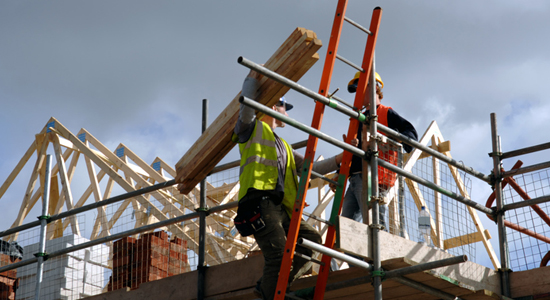Unsafe working environment
A west midlands Scaffolding Company director has been handed a suspended sentence after failing to protect his employee so far as reasonably practicable by ensuring his safety at work. The company were engaged by the main roofing company undertaking the refurbishment of a factory roof. The roofing company were also prosecuted for failing to ensure that the scaffolding employee (not in their employment) was not exposed to risk from the roofing work.
The incident happened when the employee had accessed a fragile, corrugated asbestos roof in order to fit guardrails to enable to roofing work to take place. He then fell 11.5m through the roof and unfortunately was fatally injured.
The HSE inspector who investigated said that “Falls through fragile roof materials remain one of the most common causes of work-related fatalities during construction work”.
How Can We Avoid this Happening?
This is a very tragic case, and sadly one that should have been avoidable had a suitable safe system of work been in place. Many industry guides are out there for this type of work to keep your people and contractors safe.
Working at height
Whenever working at height, the first question should always be: “Can I do this job without working at height?” – this covers the elimination element of the risk assessment process, which you must go through whenever planning work at height (or any work activity for that matter).
If the job is of a nature you can do without working at height, then we should do so, of course this isn’t always possible, as in this situation, so we must plan the work properly giving priority to measures designed to prevent a fall from height.
These measures should include the selection of the right equipment for the job at hand. For example, while a step ladder may be suitable for a short duration task of low risk, another method of working at height may be a safer and practical way of working such as a MEWP (cherry picker) or a mobile tower.
Once we have chosen the appropriate piece of equipment, we need to devise a safe way of working, ensuring collective protective measures are prioritised to prevent a fall i.e. where possible guard rails / fences.
Fall Restraint Equipment
Fall restraint equipment should be the second priority where collective measures are not possible / fully effective - this physically prevents the worker from getting close enough to the edge of a platform to fall.
Fall Arrest equipment is used where other measures are not practicable, or as a secondary measure to keep people safe in the event one of the other controls fails – this will reduce the distance a person falls or an air bag system that will cushion their fall to reduce the likelihood / consequence of injury.
When using contractors, we also have a duty to protect their welfare and ensure they do not come harm – some key elements of contractor control is confirming competence of the contractor, satisfying yourself you are happy with their risk assessment and their safe system of work (often referred to as method statement), do they have adequate insurance if something were to go wrong? We also have a duty to make contractors aware of hazards / matters affecting their safety – in the case above, the fragile roof is one of those such areas which would most certainly need flagging to a contractor.
We can conduct an audit of your business and identify gaps in your safety management system, we also offer a range of H&S training including work at height awareness, Fire Marshall, H&S Responsibilities and more. If you would like more information please call us on 0333 240 7208 or contact us here.






